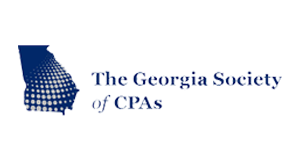Is some money “better” than other money? Or is all money the same?
Suppose you have $500,000 split equally between your TSP, a 401(k), a Roth IRA, a savings account, and an investment account. Are those balances truly equal…or are some of those accounts more valuable than others?
To answer that question, consider the “smart money list.”
1. Free money.
This is when employees direct 5% of their earnings to their TSP and their employer matches that amount. That extra 5% is free money! It’s an easy way to double the amount that you’re saving (without any cost to you). We tell clients this is a no-brainer.
Of course, there are other sources of free money: inheritances, family gifts, etc. Whatever the source, free money is awesome.
After that, there are three other types of money, each with a different relationship to taxes. The first is…
2. Tax-free money.
Here, we’re primarily talking about Roth accounts–either Roth TSP or Roth IRA.
(NOTE: It is possible to set up some cash-value life insurance policies in a way that creates some tax-free money. Also, municipal bonds can provide tax-free money–although you have to do your research. Some are federally taxed, meaning they’re not tax-free. But back to Roth accounts…)
The money you have here is (generally) not taxable. We have to say “generally,” because you will owe taxes if you don’t abide by certain rules.
One rule is you have to wait until age 59 and a half (or over) to touch the gains in your Roth account. A second requirement is that you must have your Roth account for at least five years. Assuming you meet these criteria, any distributions you take from a Roth account will not be taxed.
3. Tax-deferred money.
This is money you’ve accumulated in your traditional TSP (or traditional IRA). For example, you tell your employer, “Hey, don’t give me my full paycheck. Put 5% of my earnings in my TSP.” When you do this, you postpone paying taxes on that money. It goes straight into your TSP pre-tax and starts to grow. Hopefully, it grows a lot!
However, once you begin to withdraw that money, it’s like getting a paycheck. And that means every withdrawal is taxable at whatever tax bracket you’re in.
4. Taxable money.
This is earnings, wages, salary, W-2 type income. This includes interest earned on bank savings accounts and CDs. Rental income is included here. This money is taxed at your current tax bracket.
If you have an investment account–say, for example, a Vanguard account of stocks and/or bonds–any earnings there are taxable too.
How does that work? You’ll need to ask, “At what price did I buy these stocks/bonds? What price did I sell them for? Did I make a profit?”
If you made a profit within a year, it’s considered short-term capital gains, and that income will be taxed at your tax bracket (perhaps the 22% or 24% bracket rate).
However, if you’ve held those assets for more than a year and then sold them, any profits are considered long-term capital gains. In that case, you’ll pay taxes at either zero, 15%, or 20%, depending on your income.
Thus, with taxable income, you’ll either be paying taxes at your regular tax bracket rate or you’ll pay the capital gains rate. The thing to see here is that capital gains rates are slightly better than regular tax bracket rates.
So, let’s see how all this shakes out in practice:
If you have $100,000 in an investment account, is all that money really “yours”? Well, first you have to look to see how much of that balance is “gains”–either short or long-term. Then, you have to calculate the taxes accordingly.
In most cases, it’s not 100% yours. Some will be coming out for taxes. So, you don’t have $100,000.
Consider another example. You’re looking at your tax-deferred TSP and thinking: Hey, I’ve got $100,000 in my TSP. How much of that money is truly mine? To answer that question, we need to figure out what tax bracket you’ll be in when you start taking distributions because–remember–all of that money will be taxable at whatever your rate is when withdrawing it.
If you’re in the 22% federal bracket, you don’t technically have $100,000. You have $78,000, and the IRS is going to expect a payment of $22,000. And if you live where there are state income taxes, you’ll be sending another percentage of “your” TSP money to your state capital.
Do you see how, if you have a $100,000 balance, you don’t really “have” $100,000? It is considerably less due to taxes.
But, suppose you have $100,000 in a Roth IRA. Remember, that money falls under the tax-free category on our “smart money list.”
If you’re over 59 and a half and you’ve had your account for five years, then you do have $100,000. Every penny in that account is yours. You can access it at any time and not owe a cent in taxes.
You can see that having $100,000 in those three different kinds of accounts is not the same. Some of those accounts are better than others. This means it’s never wise to stick money willy-nilly in any old “financial bucket.”
Now, do you need some “taxable money”? Yes! Generally speaking, this is where most people’s emergency fund is. (FYI, we recommend you have 3-6 months of living expenses in an account earmarked for financial surprises.)
I think we’d agree that tax-free money is optimal. For example, if you’re going to leave money to your kids and/or grandchildren, do you want to give them a traditional IRA that will be taxable? Or would you rather leave them money in a Roth account that comes to them tax-free? I’d rather have Roth money, wouldn’t you?
My guess is, you probably have lots of questions about our “smart money list.”
You may be thinking, Most of my money is in the tax-deferred “bucket.” Is that wise? What could I do about that? What should I do? When should I start? How long will it take? How do I know what my tax bracket will be in the future?
(If you’re thinking Is it too late for me to start a Roth TSP account?–check out this video here.)
All this can be extremely confusing. That’s why getting the help of a financial expert is so smart. Some people “D-I-Y” this, make mistakes, and end up paying more taxes than they should! Others get guidance, do it right, and save thousands in taxes.
What you need is a good strategy, wisely implemented. That means talking with a tax professional or a financial advisor who can help you figure out what’s best for your unique situation.
If you don’t have a financial planner, visit our website, christycapital.com. There–in the top right corner of the page–you’ll see a green TALK WITH AN ADVISOR button. Click it, and leave us a short message. We’ll be in touch right away.
Our sole goal is to help you prepare for the best retirement possible.







